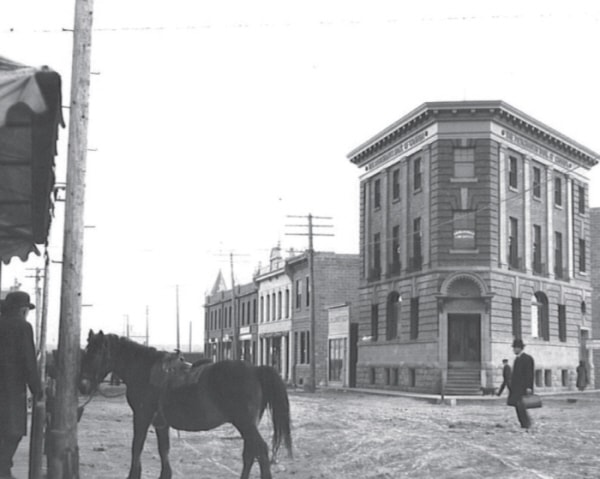HOWARD FREDEEN
Lacombe’s heritage. Our legacy from bygone years. A legacy sketched in Lacombe the First Century published in 1982.
A mixed legacy that included times when horses died like flies from the mosquito borne diseases, swamp fever and equine encephalomyelitis. Times of human health epidemics, influenza the desperate sequel to the war of 1914-1918, polio the scourge of the mid 1930s. A time of home remedies, resourceful mothers and over-worked doctors. A time when the doctors were paid in butter, a chicken, home-cured bacon or a few buckets of oats for the horse they rode to answer the call for help. Then came the drought and dust storms of the Dirty 30s coupled with an economic meltdown that saw wheat at nine cents a bushel, livestock prices that might not fetch enough to pay the freight charge to get them to the only available market, Winnipeg, if delivered on a favourable day.
But the pioneers were resilient. They countered hardship with home-made entertainment – spelling and debating contests and talent shows held in the livestock pavilion; sports competitions, baseball the favourite; horse racing on the banked race track on the grounds of the Agricultural Society. Then there were the local ‘Mom and Dad’ orchestras with fiddles, piano, guitar, the squeeze box, and by the 50s the piano accordion. And of course, the church choirs.
Some old timers of this area will remember the excitement of the summer fair when the circus came to town, when elephants led the parade down Barnett Ave. and all residents flocked to the fair grounds to see the displays of livestock, crops and garden produce. And some will remember collecting gopher tails to earn the penny per tail offered by the municipality to encourage pest control. The local Agricultural Society fair even had a special show class for school kids to display their most artful array of tails.
This column will be a compilation of my memories of events and the personalities involved since I came to Lacombe in 1947. The predominant flavour will be animal agriculture, beef cattle and pigs with small side helpings of horses and poultry. There will be a personal bias in some of the stories. You can’t spend a lifetime working in one profession at one location without developing feelings of personal concern for the future of both. I took root in the community and started absorbing the pioneer history of the community and its livestock industry. I gathered stories and folklore as easily as dogs gather fleas, details that have clung like burs in my memory. These are the tales that will dominate in this column.
These are the tales of the past. Some of these have merited refreshing in the pages of the updated Lacombe history now in preparation where the main focus will be on events and on the men and women central to those events. Everyone has at least one personal story to tell. Everyone will have a story or two that has touched their funny bone, a story of human kindness, or other human interest stories. And everyone will have their own personal version of the events of today in our City and County, a version they would like to preserve for future generations. Please share your stories that they might be incorporated in the pages of Lacombe’s history.
